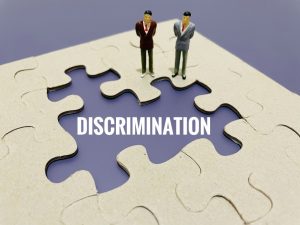Dealing with Racial Splendour in the Workplace

The civil rights movement of the 1950s and 1960s has sparked significant transformations in the circumstances faced by minority populations living and working in the United States.
Yet, there are instances where decisions in the workplace are made based on false assumptions or stereotypes about the abilities, characteristics, and performance of individuals belonging to specific ethnic groups.
However, not all individuals within a particular ethnic group share the same traits. The existence of ethnic diversity is indisputable, as people may be connected through marriage or familial ties to diverse ethnic groups. Everyone may also encounter minority cultural practices and traditions.
Legal Implications of Racial Discrimination
In accordance with the Title VII of the Civil Rights Act of 1964, discrimination in employment based on race, color, national origin, sex, or religion is unlawful and hence, prohibited.
The law also bars discrimination that is both intentional and involves policies that unfairly marginalize minorities, sometimes based on aspects such as skin tone, hair texture, or specific facial features.
Company policies, such as a “no-beard” policy or excluding individuals with sickle cell anemia, may constitute unlawful discrimination against African-Americans. The exception to this rule is if a specific requirement or policy is “job-related” and “consistent with business necessity.”
Individuals from minority backgrounds are safeguarded in matters related to resumes and employment, including job recruitment, termination, compensation, and job training, encompassing terms, conditions, and privileges associated with these areas.
On the other hand, companies are obligated to adopt best practices that promote equal opportunity for all and minimize the likelihood of discriminatory acts.
Types of Employment Discrimination
Title VII of the Civil Rights Act of 1964 extends protection to individual persons, rendering certain practices illegal.
It is considered illegal harassment when conduct is offensive and intimidating, leading to a hostile work environment and hindering an individual’s job performance.
Such harassment may include ethnic slurs, racial “jokes,” offensive or derogatory comments, and verbal or physical conduct targeting an individual’s race or color.
However, when it comes to recruitment, hiring, and job advancement criteria, uniformity and consistency should be applied to all individuals. Examples of potentially unlawful practices encompass:
- Using “tear-off sheets” to determine an applicant’s race;
- Conducting personal background checks, including criminal records checks;
- Accepting applications only from sources where most potential employees share the same race or color;
- Requiring applicants to possess an irrelevant educational background for job performance or business needs; and
- Screening applicants for knowledge, skills, or abilities that are not essential for job performance or business needs.
Pre-employment inquiries that reveal or disclose an applicant’s race may lead to wrongful use as a basis for hiring decisions that discriminate against individuals during the selection process.
Regarding compensation, job terms, conditions, and privileges, there should be no disparities in pay or benefits, work assignments, performance evaluations, training, discipline or termination, and other aspects related to employment.
Legislation Against Segregation
It is unlawful under Title VII of the Civil Rights Act of 1964 for employers to implement segregation and classification of employees, particularly by isolating them physically from other employees or from interaction with clients.
This prohibition encompasses:
-
- Assigning primarily minority individuals to predominantly minority groups or geographical areas;
-
- Excluding minorities from holding specific positions within the company or organization;
-
- Designating or categorizing employees or jobs so that certain roles are predominantly occupied by minorities;
-
- Making racially motivated decisions based on business concerns, such as “negative customer or client reaction” or “concerns about impact on employee relations”;
-
- Imposing coding systems on application forms or resumes to imply an applicant’s race, including the “use of facially benign code terms that imply race”; and
- Retaliating against anyone who opposes discrimination or participates in proceedings by testifying, assisting, or filing a charge with the appropriate agency.
Related Post:
Place of work Stereotypes associated with Asian People in america
Biases that Remain in the Workplace



